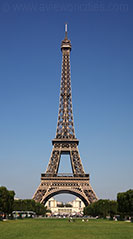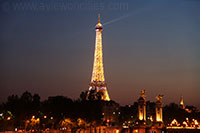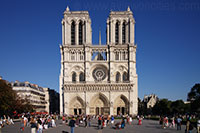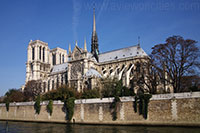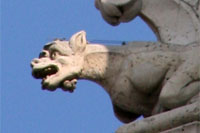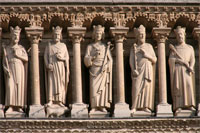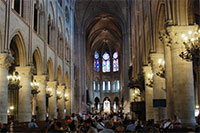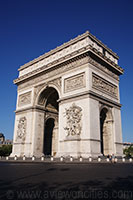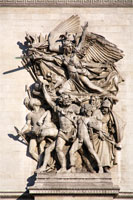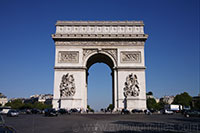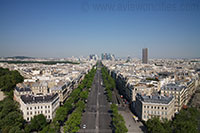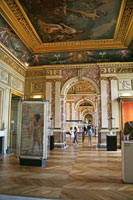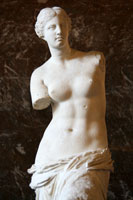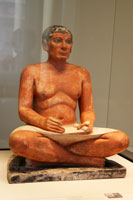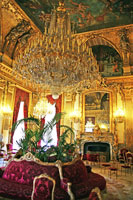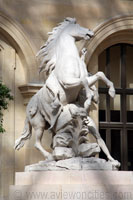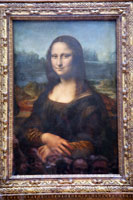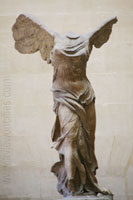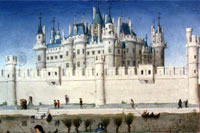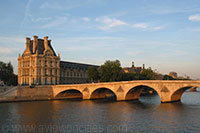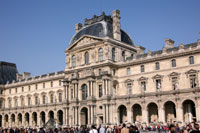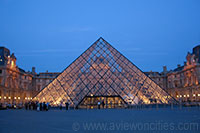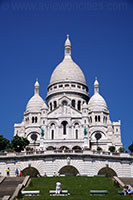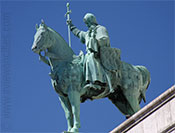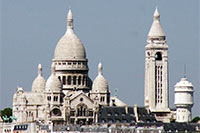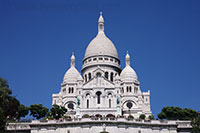There are many reasons why floating hotels are catching on around the
world. Some might tell you that the floating hotel is the resort of the
future. As global warming leads to an unforeseen rise in sea levels,
vacations on over-water villas and bungalows may be the answer. Many of
the floating properties covered in this post claim that they are
eco-friendly. This ranges from their being constructed out of recycled
materials, their running on renewable energy sources to taking care not
to harm the surrounding environment.
But there is more to these pricey floating properties than their eco friendly nature. The 10 vacation destinations listed here are everything that you may have dreamed of. They are high on luxury, ensuring that guests are well taken care of and that they lack for nothing. The amenities available at that posh New York hotel will also be available here, which is why they have been included on this list. If you are looking to go snorkeling or parasailing, many of these properties will fit the bill, located as they are amidst some of the most environmentally-rich areas of the world. If you are a seaside enthusiast, make it a point to check out each floating hotel on this list before planning your next vacation. The prices may be high, but the experiences will be truly memorable.
If Canada is where you are headed and if expense is not an issue, book yourself into the luxurious King Pacific Lodge. This property in Canada’s British Columbia region sits just outside the Great Bear Rainforest. Get closer to nature in this 17-suite lodge that is accessible only by seaplane. The lodge sits on a floating barge, and is truly high on luxury. Each suite offers king-sized beds and hot tubs. You can try seafood delicacies at the King Pacific Lodge’s luxurious restaurant or try a Japanese-style massage at the spa. But why spend all your time lounging indoors when you could be whale watching, kayaking or trekking through the rainforest. The damages are high though. A three-night stay in a double room suite including lodging, meals, activities and transport from Vancouver will set you back by $4,900 per person.

ReefWorld took the world by storm with its claims of being the first eco-friendly floating hotel in the world. Solar panels, turbines and underwater trickle-charge generators help it produce renewable energy. The hotel is two hours from the mainland by high-speed catamaran and is a great location for setting off on your snorkeling adventures in the Great Barrier Reef. Colorful corals, clownfish, turtles and more examples of exotic marine life are on offer on the waters below this floating pontoon, the largest in Australia. A semi-submarine will take non-swimmers on a trip through the ocean waters, providing views of what lies beneath. There is also an underwater viewing chamber where you can take your dinner. The hotel houses eight cabins, and houses an underwater spa, a restaurant, a swim-up bar and more. The average cost is $620 per adult per night.

Experience the grandeur of India while living like royalty in the ultra-luxurious Oberoi Udaivilas. This former palace exudes opulence in every corner. Take your cameras with you as you inspect the architecture of this splendid floating palace that stands on the waters of the Lake Pichola. Lavish courtyards and grand fountains welcome you into this historical home. While indoors, you will never get tired of admiring the intricate frescoes and elaborate domes. The suites here come with private pools. Al fresco terraces offer beautiful views of the property. While you are here, make sure to take a ride onboard a Kashmiri boat with champagne and canapés for company. Food connoisseurs can taste delicious Indian food at any of the hotel’s three restaurants.

Location is not a problem for this portable hotel. The Aerohotel is a unique and extraordinary hotel that can be taken anywhere, provided there is some water for it to float on. Created by Russian architect Alexander Asadov, the Aerohotel looks like it just flew out of the pages of a science fiction novel. Its sheer uniqueness wins it a place on best hotel lists around the world. The hotel does not so much float on the surface of the water as stand propped above it. Thus, it does not harm the environment below. The hotel houses hanging gardens, cafes and restaurants. And if you have a Zeppelin, there is a landing strip on the premises.

Guests at the Conrad Maldives on Rangali Island can book themselves into any of 50 beautiful water villas. The luxury property is located across two Maldivian islands but with much of the construction being over water. Connected to the mainland via seaplane, this secluded high-end hotel upholds the very tenets of living in luxury. The Deluxe Water Villa is the most luxurious option here, spread across an amazing 115 square meters. The ocean resort has all the hi-tech amenities that you would expect in a high-end luxury hotel in the biggest cities of the world. The all-glass undersea restaurant is one of the star attractions. Guests who are tired of lazing in the sun can head to any of the 21 water spa villas for special treatments.

The city of Dubai is slowly making its way into the world as a tourism destination for the richest of the rich. As if the Burj Khalifa was not enough, there is also a Dubai underwater hotel and now, the subject of our focus, the Floating & Rotating Hotel Tower by Waterstudio. This elaborate building stands 25 stories above sea level just off the coast of Dubai. With a foundation that is only 6 meters in depth, this architectural marvel will be another feather in Waterstudio’s cap. The tower itself rotates one degree every minute, providing guests with a different view of the ocean in every passing moment.

If standing on stilts is not your thing, why not live in a room on stilts. The Dragon Inn Floating Resort in Malaysia offers exactly that, plus a vacation in one of the prettiest locations in the world. The over-water villas here feature palm-thatched roofs and walls lined with bamboo. The VIP rooms are particularly special. They look like chalets and offer brilliant views of the surrounding ocean waters. There is plenty to do on the island of Semporna. You can go diving, snorkeling or just walk around the island. When you are hungry, treat yourself to delectable dishes using freshly caught seafood at the floating hotel’s Pearl City Restaurant.

Bora Bora is unquestionably the world capital of exotic travel locations. So it is no surprise that one of the loveliest floating resorts in the world is located on this island in French Polynesia. The Bora Bora Lagoon Resort & Spa boasts of 44 over-water bungalows, though guests can also book rooms on the beach and in the resort’s gardens. Not only do you get views of the deep blue sea, but the imposing 2,385-foot-high Mount Otemanu stands nearby. There is plenty of water sports to be enjoyed here. But whatever you do, make sure to take a trip on one of those glass bottom boats. This resort is also hailed as the ultimate honeymoon retreat. So if you have just gotten married, you might want to give this high-end resort a second look.

Travelers with a weakness for eco tourism would do well to head out to the Punta Caracol in Panama. The floating hotel promises adventure-packed holidays. So you can hike into the rainforests, swim with the dolphins, laze on the beaches that line the Caribbean Sea and so on. When you are exhausted from all the fun you have been having, make your way to one of Punta Caracol’s six “acqua lodges” – floating cabins with palm-leafed roofs. You will appreciate that the resort is eco-friendly too. Bamboo, local woods and plants have been used to construct this beautiful resort. In the high season, a night in the double master suite will set you back by $578.

To get to the Soneva Gili by Six Senses you will first have to make your way to Maldives’ capital city Male. A 15-minute boat ride from there will transport you to this luxury property, which ranks among the top hotels in the world. Guests here get to enjoy life on the sea in their own private over-water villas. There are 40 such villas on the premises, all constructed using recycled materials. The most luxurious of these stand alone on the ocean, unconnected to the main island, promising uninterrupted privacy and seclusion. Sundecks, rooftops, open-air baths and entertainment centers add to the luxury appeal. The Six Senses Spa offers some exotic therapies. Plus, you can treat yourself to organic or herbal lunches. A seven-night stay for two people at the Soneva Gili Villa Suite on a bed-and-breakfast basis including flight and speedboat transfers will set you back by £3,950 (about $6,202) per person.

But there is more to these pricey floating properties than their eco friendly nature. The 10 vacation destinations listed here are everything that you may have dreamed of. They are high on luxury, ensuring that guests are well taken care of and that they lack for nothing. The amenities available at that posh New York hotel will also be available here, which is why they have been included on this list. If you are looking to go snorkeling or parasailing, many of these properties will fit the bill, located as they are amidst some of the most environmentally-rich areas of the world. If you are a seaside enthusiast, make it a point to check out each floating hotel on this list before planning your next vacation. The prices may be high, but the experiences will be truly memorable.
1. King Pacific Lodge
Where: British Columbia, CanadaIf Canada is where you are headed and if expense is not an issue, book yourself into the luxurious King Pacific Lodge. This property in Canada’s British Columbia region sits just outside the Great Bear Rainforest. Get closer to nature in this 17-suite lodge that is accessible only by seaplane. The lodge sits on a floating barge, and is truly high on luxury. Each suite offers king-sized beds and hot tubs. You can try seafood delicacies at the King Pacific Lodge’s luxurious restaurant or try a Japanese-style massage at the spa. But why spend all your time lounging indoors when you could be whale watching, kayaking or trekking through the rainforest. The damages are high though. A three-night stay in a double room suite including lodging, meals, activities and transport from Vancouver will set you back by $4,900 per person.

2. ReefWorld
Where: Great Barrier Reef, AustraliaReefWorld took the world by storm with its claims of being the first eco-friendly floating hotel in the world. Solar panels, turbines and underwater trickle-charge generators help it produce renewable energy. The hotel is two hours from the mainland by high-speed catamaran and is a great location for setting off on your snorkeling adventures in the Great Barrier Reef. Colorful corals, clownfish, turtles and more examples of exotic marine life are on offer on the waters below this floating pontoon, the largest in Australia. A semi-submarine will take non-swimmers on a trip through the ocean waters, providing views of what lies beneath. There is also an underwater viewing chamber where you can take your dinner. The hotel houses eight cabins, and houses an underwater spa, a restaurant, a swim-up bar and more. The average cost is $620 per adult per night.

3. Oberoi Udaivilas
Where: Udaipur, IndiaExperience the grandeur of India while living like royalty in the ultra-luxurious Oberoi Udaivilas. This former palace exudes opulence in every corner. Take your cameras with you as you inspect the architecture of this splendid floating palace that stands on the waters of the Lake Pichola. Lavish courtyards and grand fountains welcome you into this historical home. While indoors, you will never get tired of admiring the intricate frescoes and elaborate domes. The suites here come with private pools. Al fresco terraces offer beautiful views of the property. While you are here, make sure to take a ride onboard a Kashmiri boat with champagne and canapés for company. Food connoisseurs can taste delicious Indian food at any of the hotel’s three restaurants.

4. Aerohotel
Where: Location No BarLocation is not a problem for this portable hotel. The Aerohotel is a unique and extraordinary hotel that can be taken anywhere, provided there is some water for it to float on. Created by Russian architect Alexander Asadov, the Aerohotel looks like it just flew out of the pages of a science fiction novel. Its sheer uniqueness wins it a place on best hotel lists around the world. The hotel does not so much float on the surface of the water as stand propped above it. Thus, it does not harm the environment below. The hotel houses hanging gardens, cafes and restaurants. And if you have a Zeppelin, there is a landing strip on the premises.

5. Conrad Maldives
Where: Rangali Island, MaldivesGuests at the Conrad Maldives on Rangali Island can book themselves into any of 50 beautiful water villas. The luxury property is located across two Maldivian islands but with much of the construction being over water. Connected to the mainland via seaplane, this secluded high-end hotel upholds the very tenets of living in luxury. The Deluxe Water Villa is the most luxurious option here, spread across an amazing 115 square meters. The ocean resort has all the hi-tech amenities that you would expect in a high-end luxury hotel in the biggest cities of the world. The all-glass undersea restaurant is one of the star attractions. Guests who are tired of lazing in the sun can head to any of the 21 water spa villas for special treatments.

6. Floating & Rotating Hotel Tower
Where: Dubai, UAEThe city of Dubai is slowly making its way into the world as a tourism destination for the richest of the rich. As if the Burj Khalifa was not enough, there is also a Dubai underwater hotel and now, the subject of our focus, the Floating & Rotating Hotel Tower by Waterstudio. This elaborate building stands 25 stories above sea level just off the coast of Dubai. With a foundation that is only 6 meters in depth, this architectural marvel will be another feather in Waterstudio’s cap. The tower itself rotates one degree every minute, providing guests with a different view of the ocean in every passing moment.

7. Dragon Inn Floating Resort
Where: Semporna, MalaysiaIf standing on stilts is not your thing, why not live in a room on stilts. The Dragon Inn Floating Resort in Malaysia offers exactly that, plus a vacation in one of the prettiest locations in the world. The over-water villas here feature palm-thatched roofs and walls lined with bamboo. The VIP rooms are particularly special. They look like chalets and offer brilliant views of the surrounding ocean waters. There is plenty to do on the island of Semporna. You can go diving, snorkeling or just walk around the island. When you are hungry, treat yourself to delectable dishes using freshly caught seafood at the floating hotel’s Pearl City Restaurant.

8. Bora Bora Lagoon Resort & Spa
Where: Bora Bora, French PolynesiaBora Bora is unquestionably the world capital of exotic travel locations. So it is no surprise that one of the loveliest floating resorts in the world is located on this island in French Polynesia. The Bora Bora Lagoon Resort & Spa boasts of 44 over-water bungalows, though guests can also book rooms on the beach and in the resort’s gardens. Not only do you get views of the deep blue sea, but the imposing 2,385-foot-high Mount Otemanu stands nearby. There is plenty of water sports to be enjoyed here. But whatever you do, make sure to take a trip on one of those glass bottom boats. This resort is also hailed as the ultimate honeymoon retreat. So if you have just gotten married, you might want to give this high-end resort a second look.

9. Punta Caracol
Where: Panama, South AmericaTravelers with a weakness for eco tourism would do well to head out to the Punta Caracol in Panama. The floating hotel promises adventure-packed holidays. So you can hike into the rainforests, swim with the dolphins, laze on the beaches that line the Caribbean Sea and so on. When you are exhausted from all the fun you have been having, make your way to one of Punta Caracol’s six “acqua lodges” – floating cabins with palm-leafed roofs. You will appreciate that the resort is eco-friendly too. Bamboo, local woods and plants have been used to construct this beautiful resort. In the high season, a night in the double master suite will set you back by $578.

10. Soneva Gili by Six Senses
Where: Male, MaldivesTo get to the Soneva Gili by Six Senses you will first have to make your way to Maldives’ capital city Male. A 15-minute boat ride from there will transport you to this luxury property, which ranks among the top hotels in the world. Guests here get to enjoy life on the sea in their own private over-water villas. There are 40 such villas on the premises, all constructed using recycled materials. The most luxurious of these stand alone on the ocean, unconnected to the main island, promising uninterrupted privacy and seclusion. Sundecks, rooftops, open-air baths and entertainment centers add to the luxury appeal. The Six Senses Spa offers some exotic therapies. Plus, you can treat yourself to organic or herbal lunches. A seven-night stay for two people at the Soneva Gili Villa Suite on a bed-and-breakfast basis including flight and speedboat transfers will set you back by £3,950 (about $6,202) per person.






